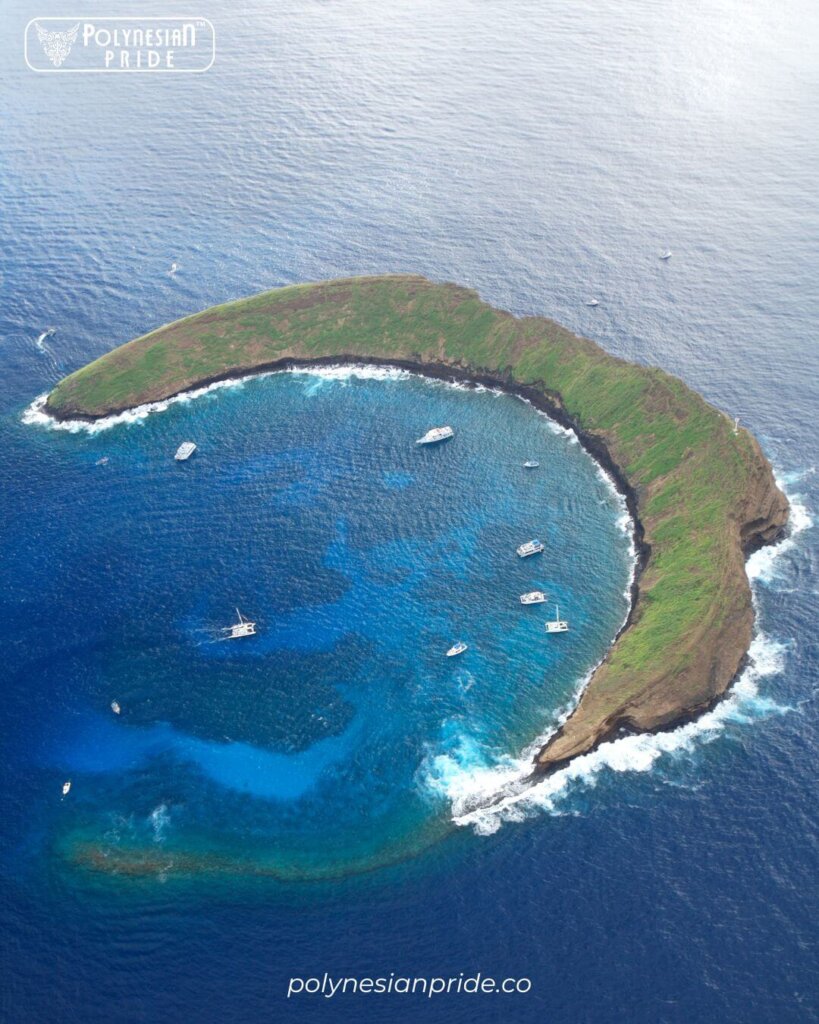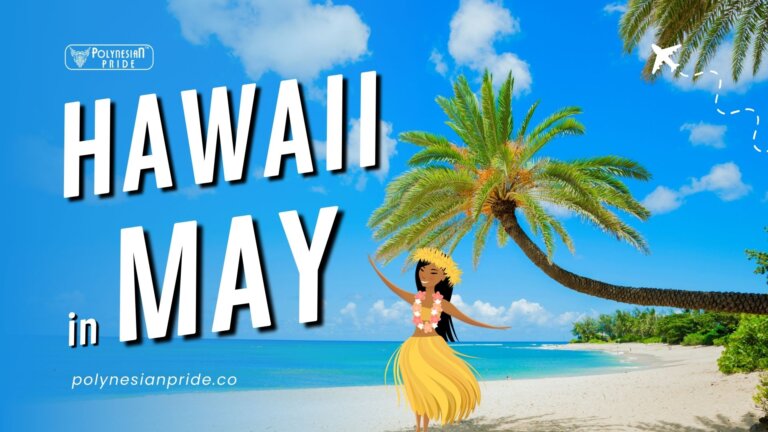When is the Best Time to Visit Maui? Your Complete Guide

Choosing the best time to visit Maui is key to making the most of this stunning Hawaiian island. Every season offers something special with its breathtaking landscapes, pristine beaches, and rich cultural experiences. Maui has everything from whale watching in winter to exploring lush valleys and vibrant festivals. Considering the climate, crowd levels, and local events, you can plan the perfect getaway and create unforgettable memories.
When Is The Best Time to Visit Maui?
Maui is beloved for its well-rounded range of offerings and laid-back country vibe.
Maui weather climate
Maui’s tropical climate and remarkable natural beauty make it an appealing destination year-round. However, the timing of your trip can significantly influence your experience, from weather conditions to crowd levels. Understanding when to visit will help maximize your enjoyment on this breathtaking island.

One of the most important aspects to consider is the weather patterns in Maui. The island enjoys warm temperatures throughout the year, typically ranging from 70°F to 85°F. The west and south coasts generally have drier and sunnier weather, while the east and north coasts experience more rainfall due to their lush vegetation. Spring (April to May) and fall (September to November) are often considered shoulder seasons, providing pleasant weather and fewer tourists than summer and winter peak seasons.
Rainy vs. Dry Seasons
The weather in Maui is characterized by two main seasons: dry and rainy.
In general, you can expect warm, sunny days regardless of when you choose to visit. However, understanding the nuances of temperature fluctuations throughout the year can help you prepare for your trip effectively.

During the dry season, from April to October, Maui enjoys mostly sunny days with occasional trade winds that provide a refreshing breeze. This period also sees temperatures rising, particularly in the summer, making it an ideal time for beach-goers and outdoor enthusiasts. You can snorkeling, surfing, or hiking without worrying about rain interruptions.

Conversely, from November to March, temperatures remain mild during the rainy season, yet the island experiences increased precipitation. While showers may be common in certain areas—especially on the windward side—the beauty of the landscape flourishes as lush greenery thrives with the rains. Many visitors find that the refreshing atmosphere and cooler temperatures make for a comfortable exploration of the island’s natural wonders.
Peak vs. Off-Peak Travel Seasons
Maui experiences distinct peak and off-peak travel seasons that can greatly impact your travel experience. Knowing these periods will enable you to tailor your itinerary to your preferences for crowds, costs, and overall atmosphere.
Peak travel times occur during the winter months, particularly from December to February, and during the summer months, specifically from June to August. These seasons draw significant travelers escaping colder climates to embrace Maui’s warmth. The vibrancy of the island during these periods brings forth an exciting atmosphere, but it also means larger crowds at popular attractions and potentially inflated prices for accommodations and tours.


On the other hand, traveling during off-peak times, such as late spring (April to May) or early fall (September to November), can enhance your experience. You’ll encounter fewer tourists, allowing for a more intimate connection with the island’s beauty. Additionally, you’ll likely find lower rates on accommodation and activities, which can result in considerable savings for your trip.
Ultimately, whether you seek the bustling environment of peak seasons or the tranquil charm of off-peak travel, careful consideration of timing can lead to a more enjoyable visit to Maui.
Don’t miss a beat with your Maui vacation planning:
– Check out our guide to the best places to stay in Maui for all the information you need for your trip.
– Check out things to do in Maui with kids to ensure your family has a truly fulfilling trip.
The Best Time for Outdoor Activities in Maui
For nature lovers and adventure seekers, selecting the best time to visit Maui for outdoor activities is paramount. Maui is renowned for its striking landscapes, pristine waters, and recreational opportunities that beckon travelers year-round. Here’s a closer look at the ideal times for specific outdoor pursuits.
Hiking and Nature Exploration

Hiking in Maui offers breathtaking vistas and diverse ecosystems, with the best time to visit Maui for hiking being the dry season, from late spring through early fall. During these months, trails like the Sliding Sands Trail in Haleakalā National Park and Pipiwai Trail are easier to navigate, with stable weather and less mud. The longer daylight in summer also allows for extended exploration.
For those preferring cooler temperatures, spring or fall are great alternatives, offering lush surroundings and blooming flora. Be sure to pack for varying conditions, especially in higher elevations where temperatures can drop.
Whale Watching
Whale watching on Maui is a magical experience that draws visitors from all over the world. The prime time for spotting humpback whales is during the winter months, particularly from mid-January to March. This is when thousands of these gentle giants migrate from Alaska to the warm waters surrounding the Hawaiian Islands to breed, give birth, and nurse their young.

Witnessing these magnificent creatures breaching the water’s surface or gracefully gliding through the ocean is an awe-inspiring sight. Tour operators provide whale-watching excursions that adhere to strict guidelines to minimize disruptions to the whales’ natural behavior. Expert guides share valuable insights into humpback whale migration patterns, behaviors, and conservation efforts, enriching the experience.
Snorkeling, Surfing, and Water Sports
Maui’s crystal-clear waters and vibrant coral reefs make it a paradise for snorkeling and diving enthusiasts. The best time for these activities aligns with the dry season, especially from April to October. During these months, calm seas and excellent visibility make it easier to explore marine life in locations like Molokini Crater and Honolua Bay.


Surfing also thrived during this time, particularly along the famous North Shore of Maui. Summer swells create ideal conditions for beginners and experienced surfers to catch waves. However, the winter months draw larger swells, attracting professional surfers and hosting prestigious competitions.

If you’re considering a mix of water sports during your trip, spring and fall shoulder seasons represent a great compromise. Conditions remain favorable for various activities while avoiding the crushes of tourists—allowing for more personalized experiences.
Best Time for the Cheapest Costs
Budget-conscious travelers know that timing is key to saving money. For the least expensive trip to Maui, aim for the off-peak seasons of late spring (April to May) and early fall (September to November). During these months, the weather is pleasant, and fewer tourists visit, allowing hotels, resorts, and tour operators to offer discounted rates.

Booking early and being flexible with your travel dates can help you secure the best deals on accommodations, car rentals, and flights. Midweek stays, when demand is lower, often come with reduced rates, even during peak seasons.
To save even more, take advantage of local events and festivals, which often offer discounted activities and provide a chance to experience Maui’s culture affordably.
Best Time for the Fewest Crowds
For a peaceful experience in Maui, timing your visit during the least crowded periods is key. The shoulder seasons of late spring (April to May) and early fall (September to November) offer ideal weather with fewer tourists, allowing you to explore the island’s attractions more peacefully.

Visiting iconic sites like Haleakalā National Park and the Road to Hana during these times gives you a quieter, more intimate experience. Weekday visits are also recommended to avoid the busier weekends when locals and tourists flock to popular spots.
For added serenity, explore lesser-known beaches, trails, and cultural sites, offering a more tranquil connection with Maui’s natural beauty away from the crowds.
Special Events and Festivals in Maui
Maui boasts a vibrant cultural scene, filled with annual events and festivals celebrating the island’s heritage and community spirit. Timing your visit to coincide with these happenings can provide enriching experiences that transcend traditional sightseeing.
Cultural Festivals

Among the most notable events is the Aloha Festivals, celebrated annually from September to mid-October. This month-long event showcases the spirit of Aloha through music, hula performances, arts, and food. The celebration attracts locals and visitors, creating a lively atmosphere emphasizing Hawaiian culture.

Another festival to attend is the Maui Ukulele Festival, typically held in September or early October. This celebration honors the beloved Hawaiian instrument and features performances from talented musicians. Attending this event not only showcases the island’s musical talent but also fosters connections within the community.
Seasonal Events
During the fall, you may encounter various harvest festivals highlighting Maui’s agricultural bounty. The Kula Festival, for example, celebrates local produce, crafts, and culinary delights while supporting community initiatives. These events allow you to appreciate the island’s flavors and traditions while mingling with residents.

In the spring, enjoy events like the Hawaiian Slack Key Guitar Festival, which takes place throughout the year. Various performances spotlight this traditional music style, showcasing local artists and fostering appreciation for Hawaiian culture.
Community Celebrations
Finally, engaging in local community celebrations provides insight into the way of life on the island. Events like the Lahaina Front Street Halloween Celebration transform the town into a colorful spectacle, inviting visitors to join the festivities. Creative costumes, live music, and delicious food create a vibrant atmosphere that captures the essence of Maui.

Participating in these festivals enriches your experience and fosters positive interactions with the local community, creating lasting memories of your time on the island.
Conclusion
In summary, the best time to visit Maui depends largely on your interests, preferences, and what you hope to achieve during your stay. Whether you’re eager to explore the island’s breathtaking landscapes, engage in thrilling outdoor activities, or immerse yourself in local culture, understanding the seasonal variations will empower you to make informed decisions that enhance your experience.
From the tranquil allure of the shoulder seasons to the vibrant atmosphere of peak travel times, Maui caters to a wide range of desires. Embrace the island’s captivating beauty, rich heritage, and exhilarating adventures—all while carefully choosing your travel window for the ultimate escape.
By balancing considerations such as weather, crowd levels, and special events, you can design an unforgettable getaway that resonates with your vision for the perfect Maui adventure. Every moment spent on this cherished island adds a chapter to the story of your travels, inspiring a deeper appreciation for its splendor and the Hawaiian spirit of Aloha.
FAQs
What are the best months to go to Maui?
The best time to visit Maui is during the shoulder seasons of spring (April to May) and fall (September to November). These months offer comfortable weather, fewer crowds, and a more relaxed atmosphere than the peak summer and winter tourist seasons, allowing you to enjoy the island without the large crowds.
What is the rainy season in Maui?
Maui’s rainy season generally occurs during the winter months, from November to March. However, areas like Wailea on the island’s leeward side tend to be drier and warmer even in the wet season, providing a more consistent climate year-round.
What month is the hottest in Maui?
The hottest months in Maui are August and September, with average temperatures reaching the low 90s°F (around 32°C). In contrast, the winter months of December and January see cooler temperatures, averaging around 75°F (24°C) during the afternoon at sea level.
What are the most expensive months in Maui?
The most expensive times to visit Maui are during the high season, which coincides with winter (December to March) in the Northern Hemisphere when people seek to escape the cold. Summer and spring break also fall into the high season, as many families plan vacations during these times, making it a busier and costlier period to visit.
What is the best time to visit Maui for whale watching?
Whale-watching season in Maui runs from November to May, with peak sightings between mid-January and March, making it the best time to visit Maui for wildlife enthusiasts.






